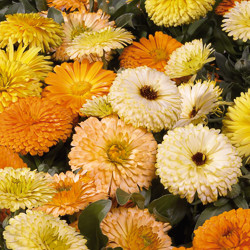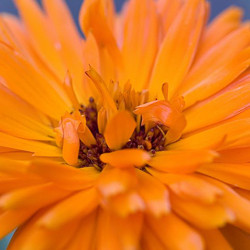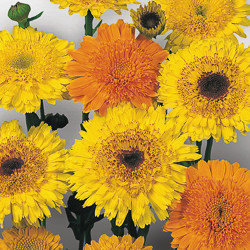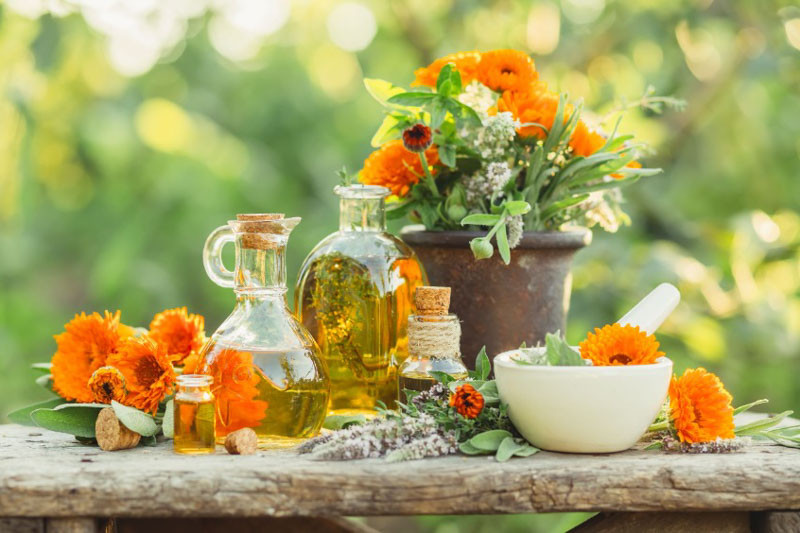Pot Marigold, English Marigold, Poet's Marigold, Common Marigold, Scotch Marigold
Grown for its cheerful bright flowers and abundant blooming, Calendula officinalis (Pot Marigold) is a fast-growing annual or biennial plant that commands attention in any landscape and rewards you with weeks of blooms, from late spring until the first frosts. Borne in succession, the vibrant blooms provide not only a splash of color in the summer garden, but they are edible and may be added fresh or dried to soups, salads, or rice dishes for both color and flavor.

Calendula ‘Bon Bon’ Series |

Calendula ‘Fiesta Gitana’ |

Calendula ‘Princess’ Series |


| Hardiness |
2 - 11 |
|---|---|
| Heat Zones |
1 - 6 |
| Climate Zones | 1, 2, 3, 4, 5, 6, 7, 8, 9, 10, 11, 12, 13, 14, 15, 16, 17, 18, 19, 20, 21, 22, 23, 24, A2, A3, H1 |
| Plant Type | Annuals, Herbs |
| Plant Family | Compositae |
| Genus | Calendula |
| Common names | English Marigold, Pot Marigold, Poet's Marigold, Calendula |
| Exposure | Full Sun, Partial Sun |
| Season of Interest |
Spring (Late) Summer (Early, Mid, Late) Fall |
| Height |
1' - 2' (30cm - 60cm) |
| Spread |
1' - 2' (30cm - 60cm) |
| Spacing | 18" (50cm) |
| Maintenance | Low |
| Water Needs | Average |
| Soil Type | Chalk, Loam, Sand |
| Soil pH | Acid, Alkaline, Neutral |
| Soil Drainage | Well-Drained |
| Characteristics | Fragrant, Showy |
| Tolerance | Deer, Rabbit |
| Attracts | Bees, Butterflies |
| Garden Uses | Beds And Borders, Edging, Patio And Containers |
| Garden Styles | Traditional Garden, Informal and Cottage, City and Courtyard |
| Hardiness |
2 - 11 |
|---|---|
| Heat Zones |
1 - 6 |
| Climate Zones | 1, 2, 3, 4, 5, 6, 7, 8, 9, 10, 11, 12, 13, 14, 15, 16, 17, 18, 19, 20, 21, 22, 23, 24, A2, A3, H1 |
| Plant Type | Annuals, Herbs |
| Plant Family | Compositae |
| Genus | Calendula |
| Common names | English Marigold, Pot Marigold, Poet's Marigold, Calendula |
| Exposure | Full Sun, Partial Sun |
| Season of Interest |
Spring (Late) Summer (Early, Mid, Late) Fall |
| Height |
1' - 2' (30cm - 60cm) |
| Spread |
1' - 2' (30cm - 60cm) |
| Spacing | 18" (50cm) |
| Maintenance | Low |
| Water Needs | Average |
| Soil Type | Chalk, Loam, Sand |
| Soil pH | Acid, Alkaline, Neutral |
| Soil Drainage | Well-Drained |
| Characteristics | Fragrant, Showy |
| Tolerance | Deer, Rabbit |
| Attracts | Bees, Butterflies |
| Garden Uses | Beds And Borders, Edging, Patio And Containers |
| Garden Styles | Traditional Garden, Informal and Cottage, City and Courtyard |
How many Calendula officinalis (Pot Marigold) do I need for my garden?
| Plant | Quantity | |
|---|---|---|
| Calendula officinalis (Pot Marigold) | N/A | Buy Plants |
Create a membership account to save your garden designs and to view them on any device.
Becoming a contributing member of Gardenia is easy and can be done in just a few minutes. If you provide us with your name, email address and the payment of a modest $25 annual membership fee, you will become a full member, enabling you to design and save up to 25 of your garden design ideas.
Join now and start creating your dream garden!
Create a membership account to save your garden designs and to view them on any device.
Becoming a contributing member of Gardenia is easy and can be done in just a few minutes. If you provide us with your name, email address and the payment of a modest $25 annual membership fee, you will become a full member, enabling you to design and save up to 25 of your garden design ideas.
Join now and start creating your dream garden!